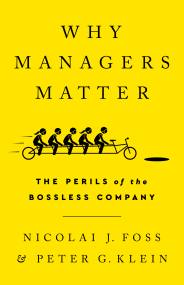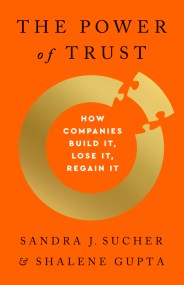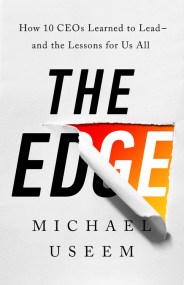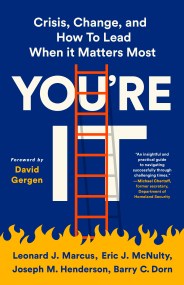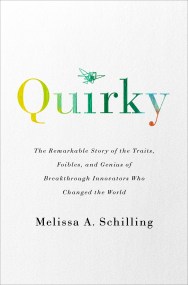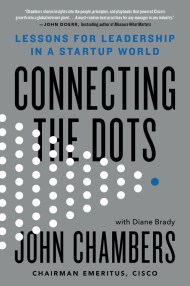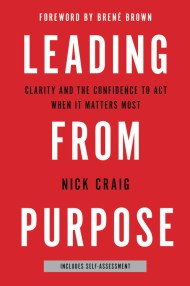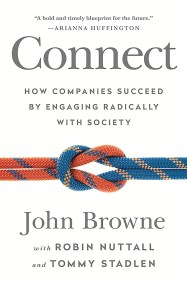Introduction
How Technology Is Isolating Us at Work
Our hyperconnectedness is the snake lurking in our digital Garden of Eden.
—Arianna Huffington
While watching Black Mirror, the popular British science fiction anthology, on Netflix, I was amazed at how well the “Nosedive” episode reflects our current society. The story is set in an alternate reality where people can rate each other using their smartphones and those ratings impact their lives. Lacie, the lead character, is obsessed with her rating, much like many of us obsess over the number of likes, comments, and shares our status updates gain. She starts the episode with a rating of 4.2 out of 5 but needs at least a 4.5 to be able to move into the more luxurious neighborhood where her friends live. Her friend Naomi, who has a 4.8 rating, asks Lacie to be a bridesmaid at her wedding. On her way to the wedding Lacie encounters a series of misfortunes that drive her rating down to a mere 2.6. As a result, Naomi asks her not to be in her wedding anymore. Although the show is fictional, this episode perfectly illustrates how technology can divide us as much as bring us together, and it holds up an unforgiving mirror that shows us how guilty we are of making unconscious social comparisons that make us—and everyone else—miserable.
Modern technologies have impacted our workplaces in ways that would have been impossible just a decade ago. Instant messaging, digital platforms, and videoconferencing have completely changed how, when, and where we work. A Gallup survey found that over a third of the entire US workforce has worked remotely, and Freelancers Union reports that freelancers also now make up more than a third. Robotics and artificial intelligence have supercharged our productivity at the cost of replacing tasks and even eliminating full-time jobs from our economy. McKinsey found that half of today’s work activities could be automated by 2055, accounting for almost $15 trillion in wages globally.
On the positive side, networks, apps, and smartphones have created a more social, collaborative, and flattering global workplace. According to the Harvard Business Review, over the past twenty years collaborative activities have increased by 50 percent and now account for more than 75 percent of an employee’s day-to-day work. But more and more of that collaboration is occurring within social networks and mobile apps, with a far smaller percentage happening in person. There’s no stopping the evolution of these technologies; they’ll continue to transform and reshape our work lives every year.
To give you a sense of just how quickly things are changing, when the telephone was introduced in the latter part of the nineteenth century, it took several decades for that new technology to reach half of all households. A century later, in the 1990s, it took fewer than five years for cell phones to reach the same penetration. Future devices could prove even faster than that.
Our devices offer many incredible benefits including real-time interactions, efficiencies in workflow, creation of new ideas, and access to resources. At the same time, those devices have disrupted our relationships and made our workplaces more dysfunctional. Instead of strong bonds, we have weak ties. Instead of productive meetings, we have distractions. Technology has created an illusion that today’s workers are highly connected to one another, when in reality most feel isolated from their colleagues.
What they crave most—and what research increasingly shows to be the hallmark of the highest performing workplace cultures—is a sense of authentic connection with others.
Technology addiction is increasing. This is especially true of younger employees who grew up with technology and are more likely to be early adopters. They happily use these devices to obtain instant gratification, alleviate stress, and receive personal validation. But there’s a darker side to this technology use. On an episode of 60 Minutes Tristan Harris, a former Google product manager, admitted that these devices are intentionally designed to make us addicted to them. Every time we pick up our phones, we’re pulling a lever in the hope of winning an exciting reward, much like using a slot machine.
Although it’s tempting to think that Harris is speaking metaphorically about tech addiction, it’s actually a very real thing. Every time we receive a text or status update, we get a jolt of dopamine in the pleasure system in our brains—the same system that controls addiction to drugs such as cocaine. Before smartphones existed, people spent an average of eighteen minutes a day on their computers and other electronic devices. Today we’re up to a whopping five hours a day, during which we tap our phones an average of twenty-six hundred times. About half of Americans are so addicted to their devices that they’d rather break a bone than their phones.
Besides putting huge amounts of money into the pockets of device makers and technology companies, our addiction is reprogramming our minds and shaping our actions, feelings, and thoughts. It’s also interfering with our relationships. Author and thought leader Simon Sinek has observed that when young people experience stress, “they aren’t turning to a person, they are turning to a device and social media that offer temporary relief.” This coping mechanism has made us depressed, isolated, and less effective in our lives.
Two global studies conducted by Future Workplace in partnership with Randstad found that what younger workers say they want has very little to do with how they actually behave. The majority of the six thousand twenty-two- to thirty-four-year-old workers polled in more than ten countries told researchers that they prefer in-person communication to technology. Nevertheless, over a third spend approximately 30 percent of their personal and work time on Facebook. Instead of having in-person meetings and phone calls, we choose texting, instant messaging, and social networking. Many of my peers even become frustrated when someone calls and leaves a voice mail, which they view as an interruption.
Workplace loneliness is spreading. When we rely on devices to connect with other humans, our relationships become weaker. Replacing human interactions with text messaging makes us lonely and unhappy. The result is an isolation epidemic that has reduced the percentage of people who say they have a close friend and has left half of all Americans feeling lonely in their public lives. Dr. Vivek Murthy, a former surgeon general of the United States, told me that “loneliness and weak social connections are associated with a reduction in lifespan similar to that caused by smoking 15 cigarettes a day and even greater than that associated with obesity.”
To be fulfilled at work, committed to our teams, and happy, we need to focus on building deeper relationships with the people around us. The famous Harvard Grant study by George Vaillant followed 268 Harvard undergraduates for seventy-five years, collecting data on multiple aspects of their lives at different time periods. Vaillant discovered that the best predictor of life satisfaction wasn’t money or career success; it was strong relationships.
A few researchers have studied the correlation between the loneliness that isolated employees feel and their commitment to their teams. The consensus is that having work friends and team camaraderie can make a huge difference when it comes to job performance, loyalty to the employer, and employees’ overall well-being. At Wharton School of Business Sigal Barsade interviewed 672 employees and their 114 supervisors and found that greater employee loneliness led to poorer task, team role, and relational performance. In a separate study John P. Meyer and Natalie J. Allen found that the quality of employees’ interpersonal relationships has a significant impact on how they perceive and connect with their companies. Employees who are lonely are more likely to feel a lack of belongingness at work and have a lower commitment to the company.
Gallup interviewed more than five million people and found that just 30 percent have a best friend at work; those who do are seven times more likely to be engaged in their jobs. In a separate study for this book, Virgin Pulse and Future Workplace polled more than two thousand workers in twenty countries and found that 7 percent of workers have no friends at work and more than half have five or fewer friends. Those with the fewest friends felt lonely “very often” or “always” and were not engaged in their work. This is especially important for people of my generation, who consider their team their work family and their boss their work parent. No one wants to leave their family for a group of strangers at another company, just as no one wants to let their family down by being a poor performer.
Isolation in the workplace has caused employees to seek more intimacy, be more empathetic, and build deeper friendships. After surveying more than twenty-five thousand employees from ten countries, we found that remote workers who rely on collaborative tools are more likely to pick up the phone, check the tone of their emails, and befriend coworkers. As an introvert who has worked from home for several years in both Boston and New York, I can relate to this need for belonging, and I know that I’m far from alone. Even with New York City’s population of over 8.6 million and the countless restaurants, bars, museums, concerts, sporting events, and other activities the city has to offer, it’s easy to feel lonely here. And that’s a problem that affects cities and countries around the world, with devastating consequences. Japan’s population is expected to drop from 127 million to 87 million by 2060. The cause is fewer marriages, which stems from people not having enough human contact and instead relying on technology to do their “socializing.” In France, although the average workweek is fewer than forty hours and employees receive five weeks of guaranteed vacation, the government instituted a “right to disconnect” law, allowing workers to shut down their devices once the workday has ended. After discovering that more than nine million people always or often feel lonely in the United Kingdom, Prime Minister Theresa May appointed a minister for loneliness to tackle the problem.
The combination of work isolation and technology overuse and addiction has given rise to what I call the experience renaissance, in which people are deliberately seeking out ways of spending time and doing things with others. A recent Harris Group study found that 72 percent of young workers prefer to spend more money on experiences than on material things. In festivals, adult day camps, yoga retreats, group trips, and dinners, people have sought out experiences as a way to establish the connections that they crave—and miss. Despite this renaissance, the average American still spends barely thirty minutes a day in face-to-face social communication, compared to three hours watching television. This lack of social connection affects not only our work experiences but also our survival. After reviewing 148 studies with 308,849 participants, Julianne Holt-Lunstad, a psychologist at Brigham Young University in Utah, found that the strongest predictor of a long, healthy life was social integration or how much we interact with people throughout the day.
This book is a deeply personal one. As a young leader like you, I have struggled to maintain a balance between my business life and my personal life. I went from working on a team in a Fortune 200 company to being a “solopreneur” to being on a team again with another business, and I know that I’m guilty of overusing technology and texting instead of picking up the phone. Throughout my journey I’ve felt lonely, depressed, and fearful. Nevertheless, I’ve learned how to use technology to facilitate more in-person connections, and I know the value of those relationships and how to maximize them.
During a three-hour interview I did for a documentary on my generation, I was asked several times about the greatest challenge we face. While many might have said global warming, terrorism, or the student loan crisis, I said isolation. No question, those other issues are extremely concerning, but they’re pretty much out of our immediate control when compared to the day-to-day decisions we make about our lives. My hope is to start a global movement about the importance of employee relationships and to initiate a process of making the workplace a better experience for all of us.
The point of Back to Human is to help you decide when and how to appropriately use technology to build better connections in your work life. I’ve witnessed firsthand how technology has enabled me to create a network and build a business that I never thought would have been possible. I have also seen how some of that same technology has prevented me from building deeper relationships and distracted me from living in the moment. During my interviews with dozens of prominent leaders for this book, time and time again they reaffirmed that technology is a double-edged sword. Back to Human addresses the hidden emotional need that makes us more human and less machine, not by discounting technology altogether but by explaining how to use it to propel your career.
My personal mission is to assist you through your entire career life cycle, from college to the C-suite. My first book, Me 2.0, helped you get your first job after college, and my second, Promote Yourself, supported you on your upward path from that first job into managerial roles. I wrote this book specifically for the next generation of leaders. I will walk you through everything you need to do to create a workplace in which your teammates feel genuinely connected and engaged. This book will help you master self-connection, promote team connection, and build organizational connection. Doing so will help you be the leader your organization desperately needs, while providing greater fulfillment for you and those you connect with.
My goal is to bring some sanity back to the workplace. We spend an average of forty-seven hours each week working, and with all our devices, it feels like we’re always on the clock. Because we spend so much of our lives working, it’s absolutely critical that we improve our relationships with our teams and create a culture of trust.
Back to Human is designed to help you become a more effective leader by creating meaningful connections within our tech-heavy workplaces. Throughout the book you will learn how the four employee engagement factors (happiness, belonging, purpose, and trust) can be used to foster healthier and more productive work cultures. Each chapter focuses on an important topic that impacts our work lives. I start by identifying a problem and then move on to practical solutions to address that problem. You’ll learn how to make better decisions about interacting with your team; how and when to use technology (and when not to); and what specific steps you can take to facilitate deeper, more effective, and more human relationships with them. The corporate cultures we’re experiencing right now must change—and this book will show you exactly what you need to do to be more productive and fulfilled at work.
Cheers to your success!
Dan Schawbel




